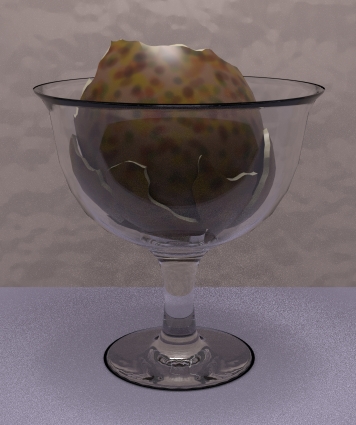Rul Eggshell
The eggshells of their children are treasured possessions for Rul parents.
Properties
Material Characteristics
Rul eggshells are smooth with a slightly silky sheen. The outer side is mottled with colors ranging from red, yellow and brown to green.
They have an average thickness of about 4 mm. The egg as a whole is about 13 cm wide and 17 cm long.
Physical & Chemical Properties
The raw material is quite brittle, since hatching infants secrete an enzyme that dissolves the embedded protein scaffolding. After cleaning, the shells are commonly treated to make them more resilient.
History & Usage
History
After a Rul infant hatches, the eggshell fragments are cleaned and kept by the parents. This tradition goes back to prehistorical times.
The exact reasons why the eggshells are kept vary. Throughout history they have served as status symbols showing off a parent's fertility, as sentimental souvenirs or as reminders of the fact that every life starts out small and fragile.
Everyday use
The fragments are generally put on display in one form or other. Some families place them on a dedicated shelf, usually in a glass chalice or similar transparent container. Others use them to decorate a prominent piece of furniture, such as a chandelier, or have them fashioned into jewelry that is worn on special occasions.
Cultural Significance and Usage
Their child's eggshell holds a significant value for the parent. As such, shell fragments are off-limits for commercial trade or industrial use.
A parent or child destroying them on purpose signifies a deep-seated disagreement between the two parties that is unlikely to be resolved, and destroying eggshells kept by someone else is a serious offence.
In case two parents go separate ways, eggshell fragments are split equally between both of them.
After death, parents are commonly buried along with the eggshells of every child they had.
Distribution
Storage
Raw eggshells need to be handled with a lot of care because of their brittleness. They are cleaned with mild detergents and antimicrobal solutions, then they are left on a towel to dry. Afterwards they are commonly soaked in resin for stabilization, especially if they are to be used in jewelry.
Type
Biomaterial
Value
sentimental
Rarity
common
Odor
odorless
Color
mottled in shades of red, yellow, brown or green
Common State
solid
Related Species




Comments